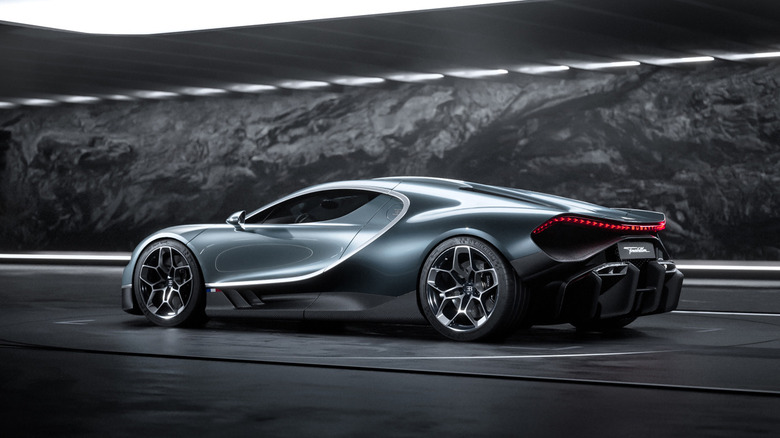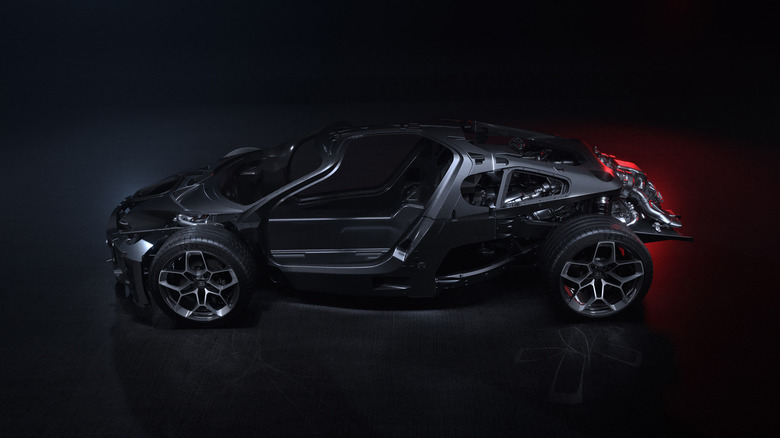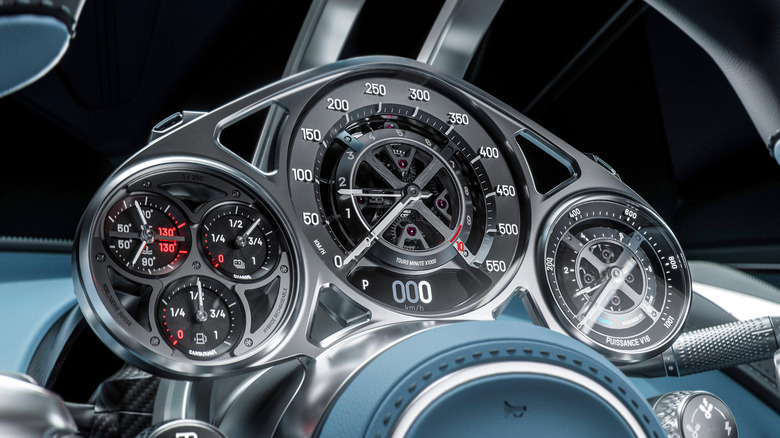Bugatti Tourbillon Is A 277 Mph V16 Hybrid To Prove ICE Isn't Dead Yet
Bugatti has just taken the wraps off of its latest Supercar/Hypercar creation, the Tourbillon, and the numbers are off the charts. Powered by a combination of an 8.3-liter, naturally-aspirated V16 engine and a three-motor hybrid system, the Tourbillon is one of the most powerful production vehicles ever made — priced at $4.3 million. Following in the footsteps of vehicles like the Chiron and the Veyron, the Tourbillon is the flagship vehicle for Bugatti. It would've made sense for a Rimac-Nevera-based EV platform to lead the way (especially with Rimac as part-owner of Bugatti), but Bugatti isn't done with internal combustion just yet.
The V16 engine that powers the Tourbillon makes 1,000 horsepower and revs all the way to 9,000 rpm — with no turbochargers, no supercharger, and before the addition of the power provided by the hybrid system. Once you add in the three electric motors and the 25 kWh battery (capable of providing 37 miles of EV-only range), that number goes up to a scarcely-believable 1,800 horsepower, making it the most powerful Bugatti ever — and significantly more powerful than the Chiron. Bugatti claims a top speed of 445 kph, which translates to just over 276 mph –and there's no reason to doubt that claim. Hypercars like the Chiron and Veyron have been setting a new standard for speed for years, so we expect the same from the Tourbillon.
Fast, but more than just fast
Of course, the kind of speed achievable from an 1,800-horsepower hypercar rightfully gets all the headlines, but there's more to it than just sheer power. Bugatti claims that the Tourbillon will go from 0-60 mph in just 2.0 seconds, reaching 124 mph (200 kph) in less than five seconds. Keep the throttle pinned, and it will reach 248 mph in less than 25 seconds. All those numbers are incredible, but the way they're achieved is just as impressive. The Tourbillon uses a number of advanced materials and construction techniques, like a monocoque chassis made from aerospace-grade carbon composite. It also uses modern technology like 3D printing in the construction of items like suspension components, to keep the vehicle's overall weight as low as possible.
There's performance in mind around every corner, but without sacrificing luxury. To maintain a low seating position, the seats are fixed directly to the floor. But how do you adjust your seating position? Surely, this hypercar must adjust to individual owners — and of course it does. The pedals and steering wheel come to you — a strategy inspired by motorsport.
Upscale doesn't even begin to describe it
Inside, the Tourbillon continues to remind you just how special it is, no matter where you look. The steering wheel uses a set of stationary dials, designed by Swiss horologists, using materials like titanium, sapphire, and ruby, floating in the center of the steering wheel's moving outer rim. Many of the dials' 600 components can be seen behind the gauges, much like the moving pieces of a high-end luxury watch.
The center console uses crystal glass around many of the control knobs, showing the inner workings of things like the volume knob. If you hate the look of a tacked-on infotainment display cluttering up your ultra-luxurious console, you're in luck. The Tourbillon's center screen can be hidden away behind the dash and brought out on command when you want to use its functions. Even the stereo is unique in its design, using exciters and interior panels as speakers, rather than heavy traditional speakers that would add to the vehicle's overall weight. And, of course, materials like titanium, cashmere, wood, and sapphire are all used in the Tourbillon's interior construction, a constant reminder of the fact that you're driving a car with a $4.3 million-dollar price tag.


